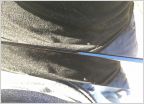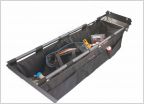-
Welcome to Tacoma World!
You are currently viewing as a guest! To get full-access, you need to register for a FREE account.
As a registered member, you’ll be able to:- Participate in all Tacoma discussion topics
- Communicate privately with other Tacoma owners from around the world
- Post your own photos in our Members Gallery
- Access all special features of the site
Upgrading ground strap from battery to frame
Discussion in '3rd Gen. Tacomas (2016-2023)' started by Blueberry.Taco, Jan 15, 2021.
Page 2 of 2
Page 2 of 2


 Go Pro Dashcam Question
Go Pro Dashcam Question Best products to lubricate suspension
Best products to lubricate suspension Should New OEM fender flare seal have a gap?
Should New OEM fender flare seal have a gap? $398 Bumper
$398 Bumper Bed Dividers
Bed Dividers Homemadeish qi wireless charging for my SR
Homemadeish qi wireless charging for my SR











































































